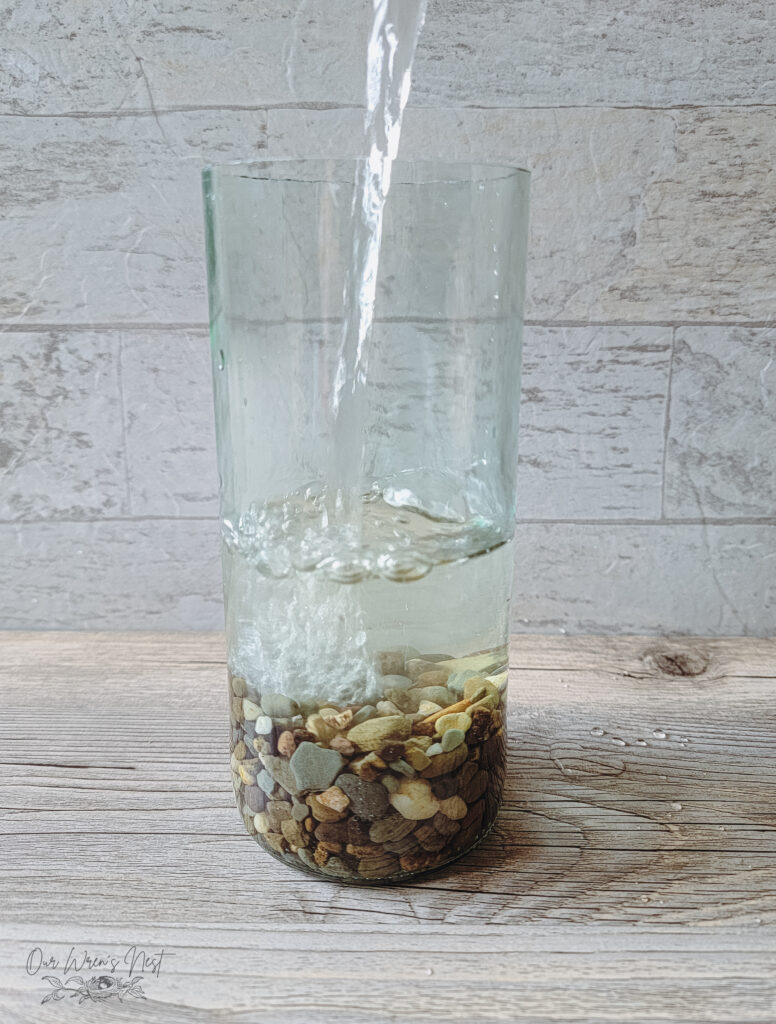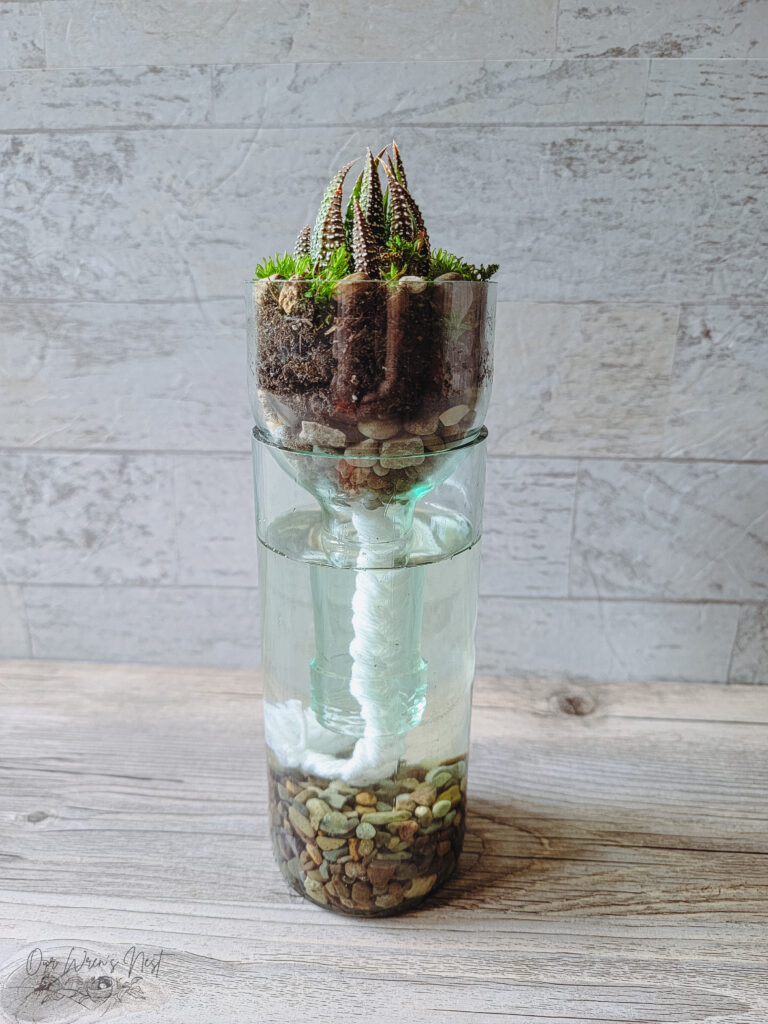
Recycle wine bottles into a unique self watering planter!
Before we get to crafting, I want to share a little background. I’m always on the search for a chance to be creative. Nothing is better than a late evening just creating. It really is the best stress relief. Seven years ago I discovered a “craft” that was a bit life-changing. By teaching myself how to cut wine bottles from a 1960s McCalls magazine, I was able to open a lot of doors and create some great memories. You may be thinking, it’s just a craft, but some crafts really spark something in you, and you will never forget them!
Creating the wine bottle planters led me to run a little business. I have learned so much by running a business on my own, traveling to some fun craft shows, and learning a lot about those in the “artist” world. I have even gained some very amazing friends along the way. There are times I feel like my adventures with the wine bottle planters were “twas in another lifetime” (Bob Dylan reference), but I’m so incredibly blessed with the opportunities I’ve had and continue to have. I want to share how I create my wine bottle planters in hopes that I can spark that creative fire with all of you! Let’s get started!

To make your own self-watering wine bottle planter, you will need to gather some materials. You will first need, of course, some empty wine bottles or glass bottles that are similar in shape to a wine bottle. You will also need some leather gloves, protective eyewear, emery cloth, cotton yarn, scissors, small gravel, a succulent (or herb plant), succulent soil, and a glass bottle cutter. I highly suggest the Diamond Tech Bottle Cutter. I tried many cutters before finding how much I loved the Diamond Tech Cutter. I’ve literally cut 100’s of bottles with this cutter. You want to use the cutter method when cutting your wine bottles. Do not try the trend of lighting a string around the bottle, and putting the bottle into cold water, it does not work and can be very dangerous!
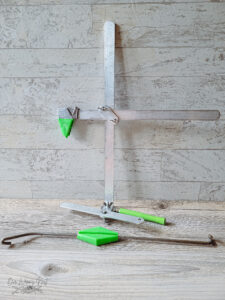
You are going to want to clean the labels off your bottles and remove the band around the neck of the bottle. For the metal bands, carefully use some metal cutters to get those off. To get the labels off your bottles, you can soak your bottles in some warm water with dawn dish detergent, this will cause the labels to soften and sometimes even float off on their own. If I’m just creating 1 planter, I will take a wet paper towel and wrap the bottle. Allow the label to soak for about 15 minutes, then peel off the paper towel and pull off the label. If you have an extra sticky label, some Goo Gone helps to remove the leftover residue.
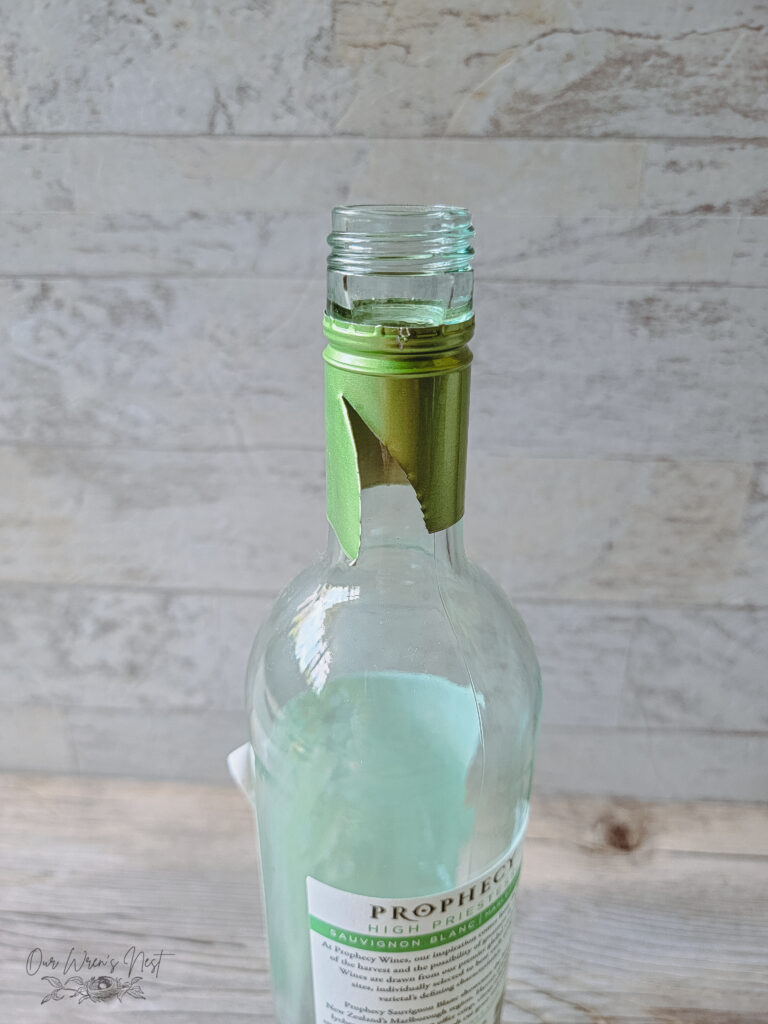
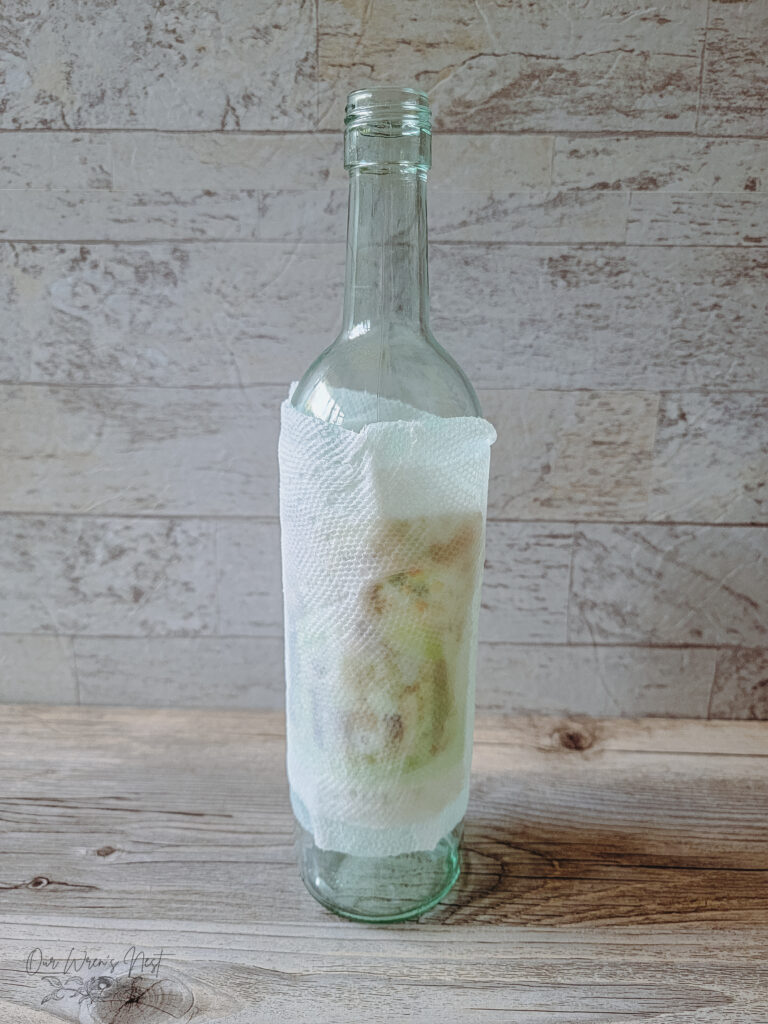
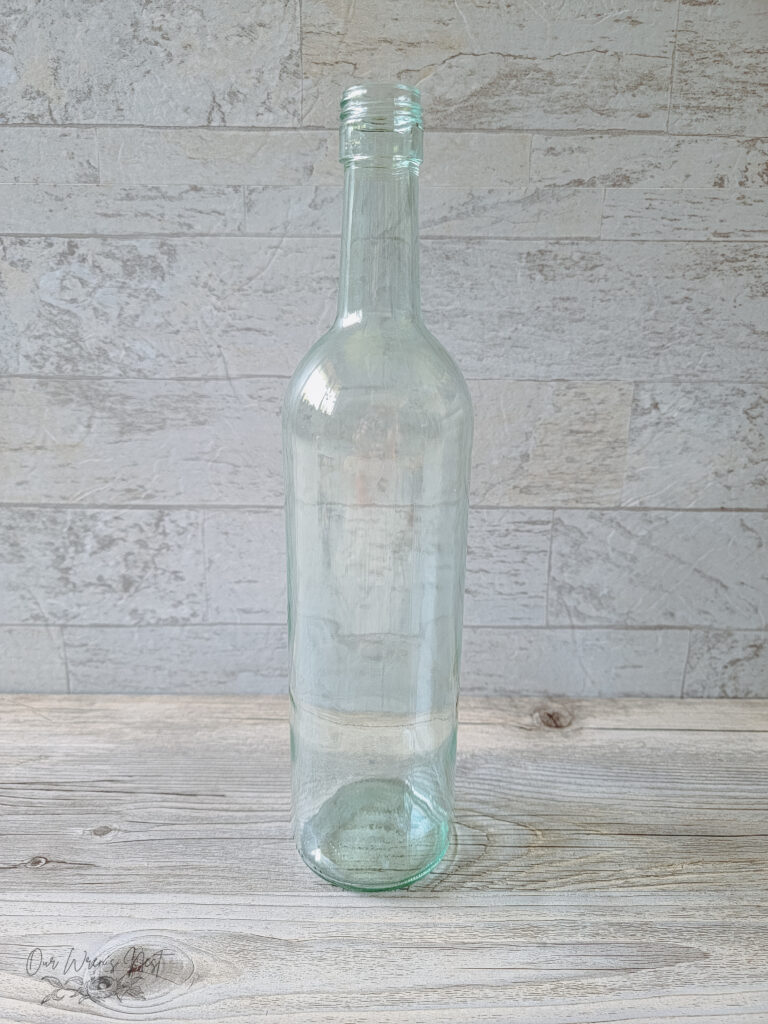
After your bottle is all clean, now it’s time to cut your bottles. It goes without saying, you need to be VERY CAREFUL when cutting glass. Your cut bottle will be very sharp, then you are scoring the bottle so you will have some small glass pieces that will fall off the bottle. Always wear leather gloves and safety glasses when cutting the bottles. I like to cut my bottles on a paper bag or newspaper so when I’m done cutting I can carefully roll the paper up and throw it away. No chance for glass splinters. Safety first always!
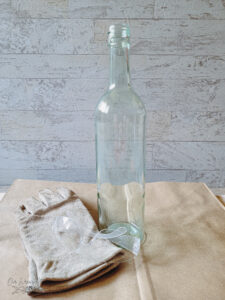
No matter the cutter you use, you will need to score your bottle first. I like to make sure my scoreline is lined up carefully to match my cutter “hammer”. When scoring your bottle, you want to create a solid, even pressured line around your bottle. As you go around the bottle you will hear your score wheel working. When you reach your starting point of the scoreline, you will hear a popping noise. Stop there! You don’t want to continually go over your scoreline. This can create extra stress lines and can cause your cut not to be straight around the bottle. You can watch me score my bottle below.
After your bottle is scored, it’s time to “cut” your bottle. Basically using the smaller hammer, you are creating a controlled break around the bottle. Using the hammer at the start of the break line, you are going to make little taps, encouraging the break around. Watch as I give this bottle a “cut”. A little side note, sometimes a cut doesn’t go as planned, a bottle breaks, etc. Just be prepared that not every cut will be perfect, and it’s ok that’s what creating is all about! Be sure to practice a few times before trying to cut a bottle that may be very special to you.
After your bottle is cut, you will need to sand the rough sharp edges of your cut. The quickest method is to use some wet emery cloth, and gently work your way around the top of your cuts. You are just making the cut area not super sharp. Always be sure your emery cloth is wet, and be careful by your cut edge. Alternatively, you can use some emery power mixed with water on a scrap piece of glass, and in a figure 8 motion swirl your cut edges in the emery solution. This method is very loud, and I only use it if I have a ton of bottles to smooth out.
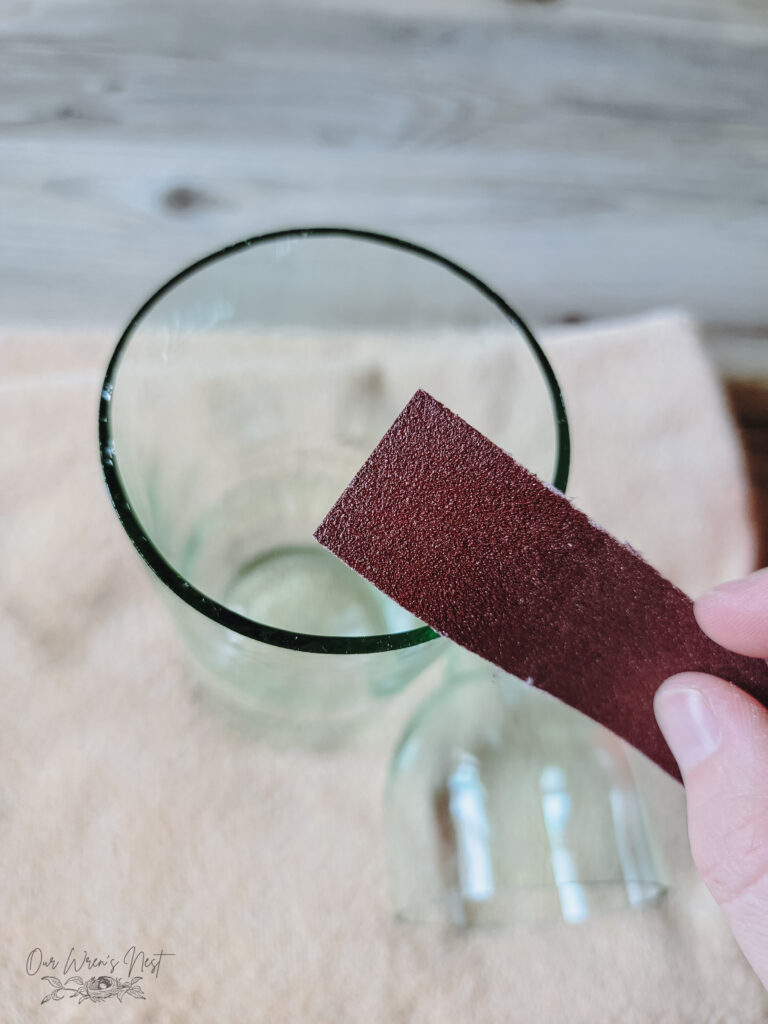
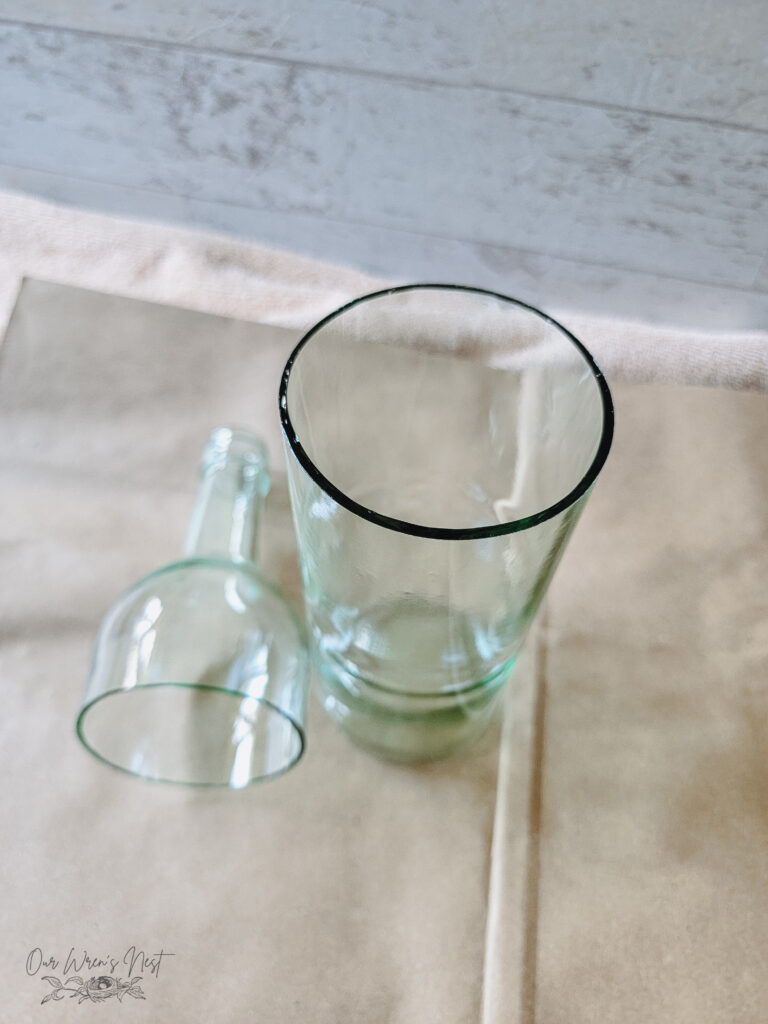
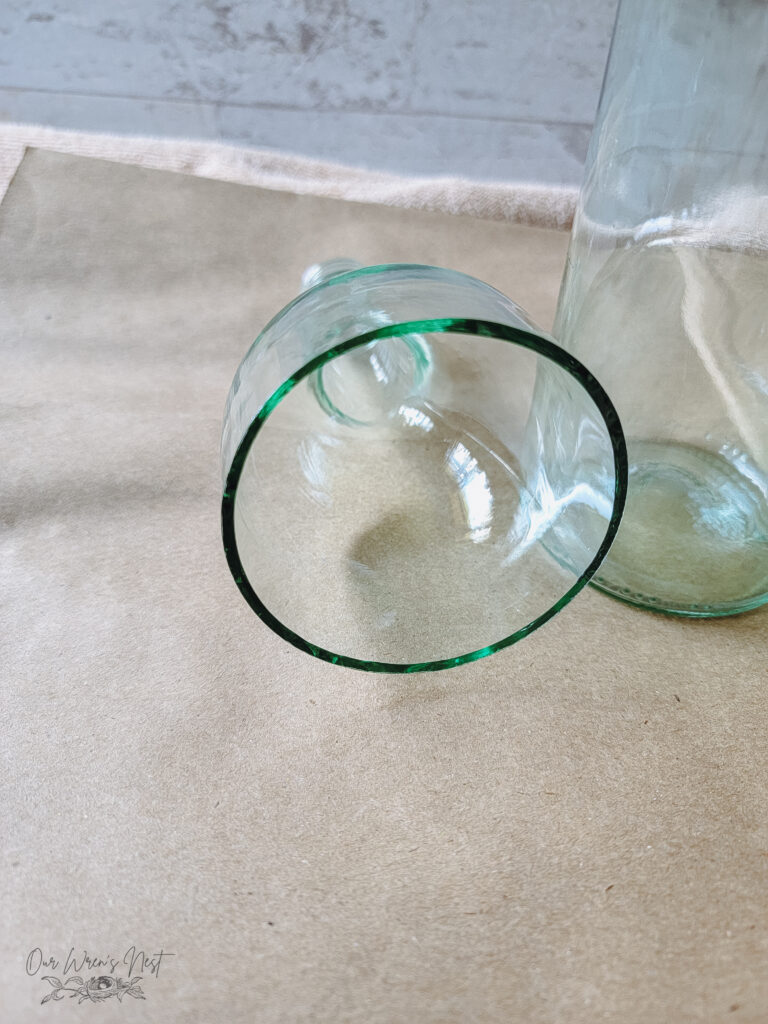
After your bottle is all cut and sanded, you can assemble your planter. You will want to add some gravel to the bottle of your planter, about an inch or so deep. Make sure the neck of your bottle sits feely without touching the gravel.
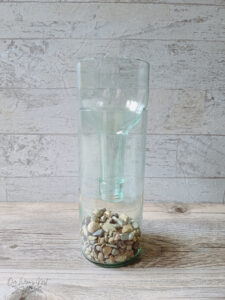
This planter is self-watering, which makes it even more awesome! For your wick, I suggest making an 8-9 inch braid of cotton yarn. You can also use strips of wool felt for your wick as well. Be sure the wick goes down the neck of the top of your planter and extends a few inches out of the end. At the top, you want to make a knot to hold the wick into place. Allow the extra yarn pieces to stand up a bit. After your wick is in place, add just a little bit of gravel around the knot of the wick.
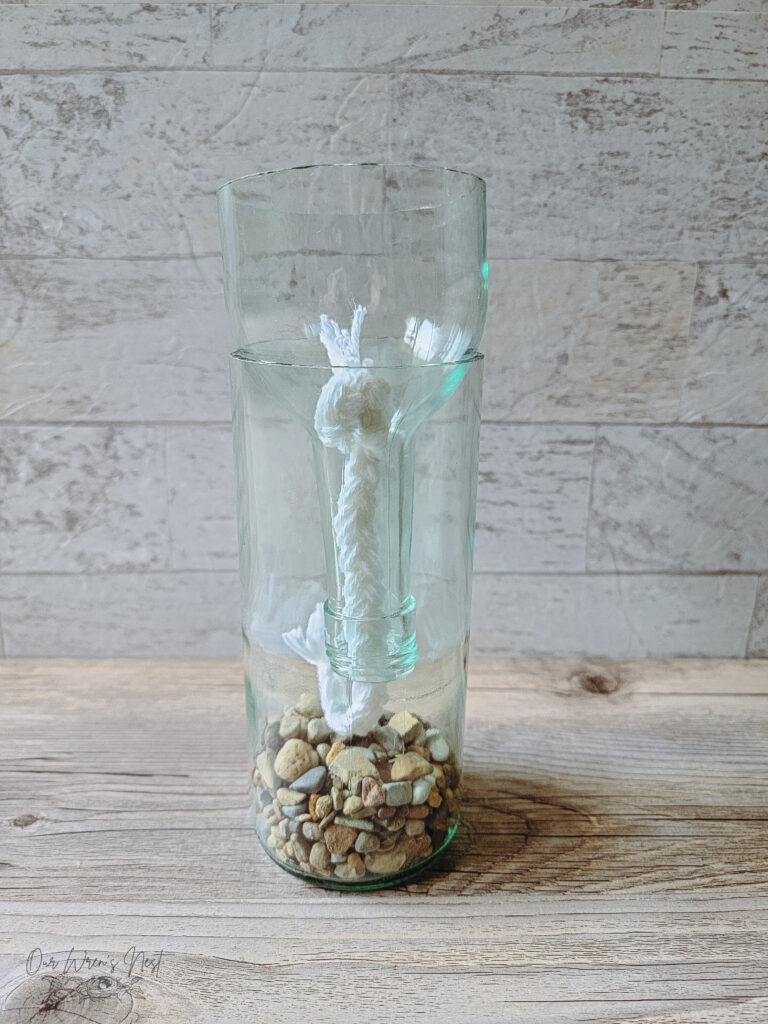
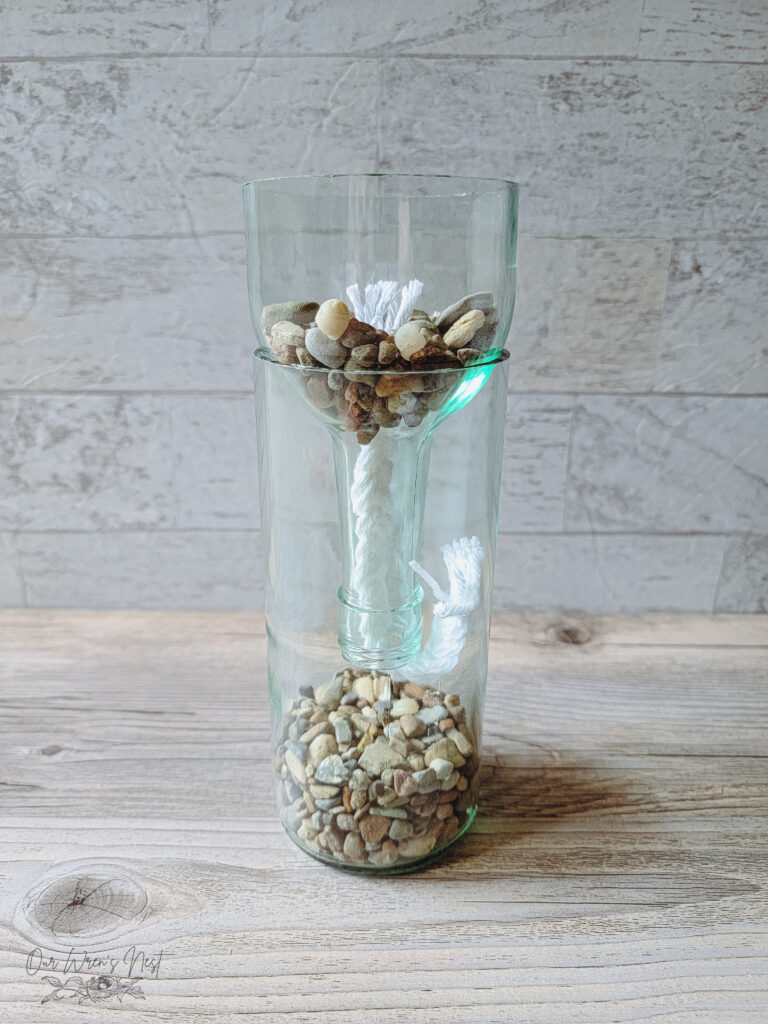
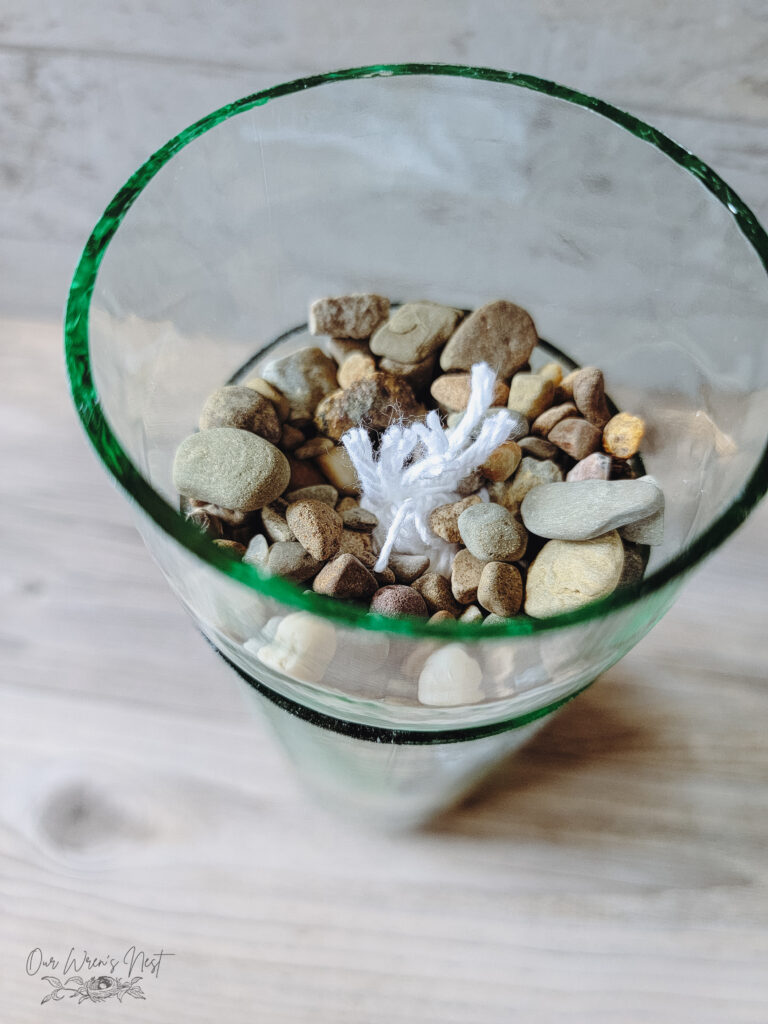
Now is time to add your succulent. I like to place my succulent or another plant in the center of the planter, then gently using some premoistened succulent soil, I fill around the succulent. You can also use some moss, and gravel to hold your plant into place. Over time your succulent and plant will start to grow their roots down through the gravel, and down the neck of the top of your planter in the bottle of the planter. It’s so cool to see!
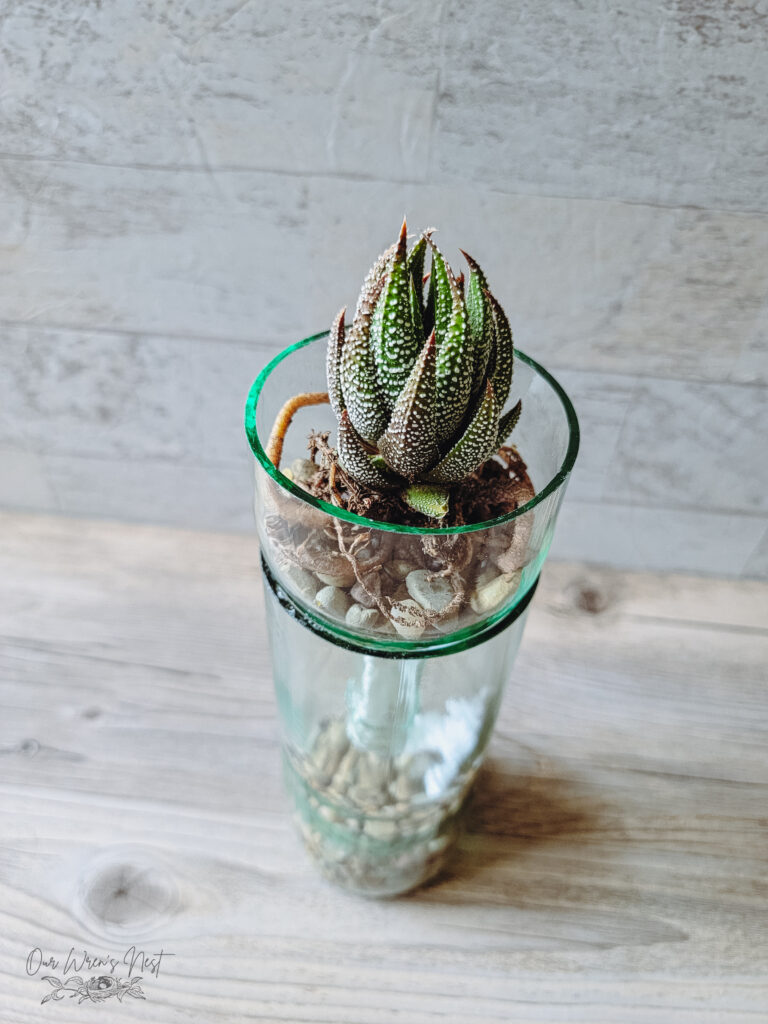

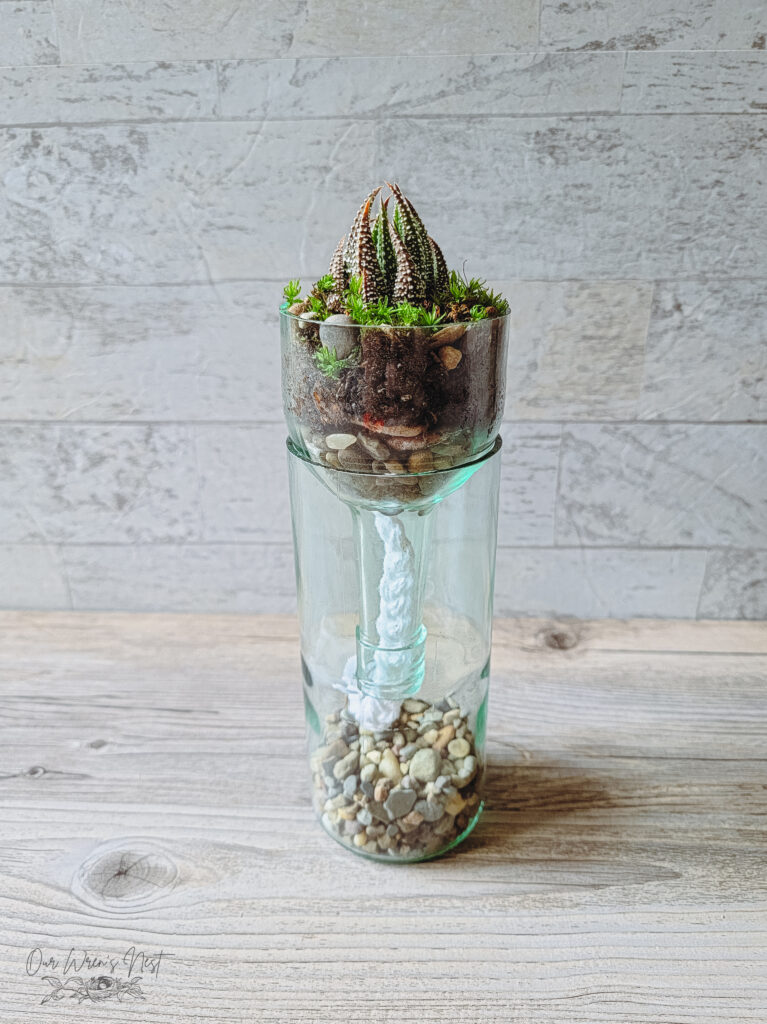
Your last step is to add water to the bottom of your planter and find a sunny place for your new self-watering succulent planter! Hopefully, I’ve given you some inspiration to turn those used wine bottles into something simply beautiful! Happy creating!
